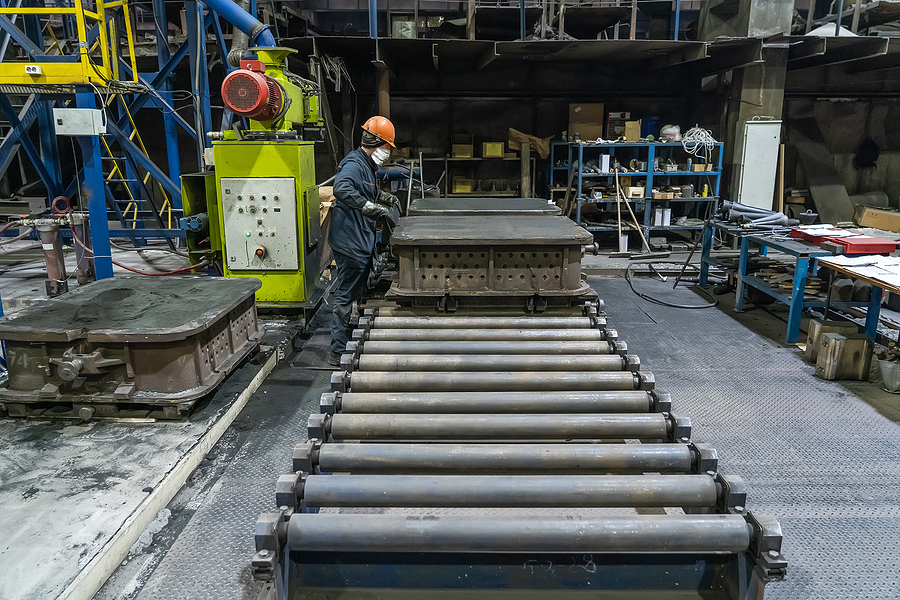Manufacturers: Take Note of Key Tax Provisions of the CHIPS Act
Kirsch CPA Group
Sep 14, 2022

The Creating Helpful Incentives to Produce Semiconductors for America Act (CHIPS Act) recently became law as part of the CHIPS and Science Act of 2022. Among other things, the new law provides more than $52 billion in funding for manufacturers to produce semiconductors, also known as chips. It also includes a temporary 25% tax credit for investments in chip manufacturing.
While the incentives themselves are narrowly targeted, the expansion of semiconductor production should benefit a wide range of manufacturers. Here’s a summary of the two main components of the CHIPS Act: the funding initiatives and the new manufacturing tax credit.
Funding Initiatives
The CHIPS Act authorizes appropriation of $52.7 billion in funds for an initiative by the U.S. Commerce Department facilitating the use of semiconductors. The program, to be conducted over five years, is designed to develop domestic manufacturing capability and bolster research efforts previously approved as part of a 2021 national defense plan.
For starters, $39 billion of the total amount is to be allocated over five years toward providing financial support for building, expanding or modernizing domestic manufacturing capabilities. A maximum of $6 billion of these funds may be used for loans or their guarantees. The CHIPS Act appropriates $11 billion, again over five years, in support of research and development and workforce programs.
Furthermore, the law sets aside $2 billion to be used by Microelectronics Commons. This is a network within the United States dedicated to workforce training in the semiconductor industry and features the latest technology in this manufacturing niche.
Another $500 million is authorized for creating future partnerships with foreign governments to support efforts crossing international boundaries. These will focus primarily on supply chain links and technology-related security issues. As with other programs, the rollout period is five years. Specifically, $200 million is earmarked for the National Science Foundation to strengthen relationships within the semiconductor workforce.
Finally, the CHIPS Act allocates $1.5 billion for a Public Wireless Supply Chain Innovation Fund. This fund promotes and implements new technology, including software, hardware and microprocessing units.
Be aware that the new law has some geopolitical overtones. Notably, it prohibits entities from building or expanding new manufacturing capacity for advanced semiconductors in China or certain other countries when it presents a national security threat to the United States. To ensure that these restrictions remain up to date, the appropriate authorities are required to review technologies that fall with this realm.
In another restriction, the new law includes language prohibiting the use of the funding initiatives discussed above for repurchasing stocks and paying dividends. Manufacturers should be forewarned of this critical issue.
Manufacturing Tax Credit
The CHIPS Act provides temporary relief for the manufacturing sector in the form of a new, albeit temporary, tax credit for producing semiconductors. The “advanced manufacturing investment credit” for investments in semiconductor manufacturing property will be codified in Section 48D of the Internal Revenue Code.
The credit amounts to 25% of qualified investment related to an advanced manufacturing facility — that is, a facility with the primary purpose of manufacturing semiconductors or semiconductor manufacturing equipment. Manufacturers may claim the credit for producing semiconductors or building specialized tooling equipment required in the semiconductor manufacturing process. Note that the tax credit — as opposed to a deduction — results in a dollar-for-dollar reduction of tax liability.
Significantly, qualified manufacturers can elect to treat the credit as a payment against tax under the “direct pay” method providing refundability. In other words, taxpayers can receive a tax refund if they don’t have sufficient tax liability to use the credit. Without this option, eligible taxpayers could struggle to monetize their credits.
The credit is available for qualified property placed in service after Dec. 31, 2022, if construction begins before Jan. 1, 2027. If construction began before the CHIPS Act was enacted, though, only the portion of the basis attributable to construction begun after enactment is eligible.
Guidance Incoming
If your manufacturing company might qualify for the new tax credit, keep an eye out for additional IRS guidance on just how it will work, including the direct pay provision. Kirsch CPA Group can help you make the most of this and other tax credits.
We can help you tackle business challenges like these – schedule an appointment today.
© Copyright 2022. All rights reserved.
More Resources

About The Author
Kirsch CPA Group is a full service CPA and business advisory firm helping businesses and organizations with accounting,…





